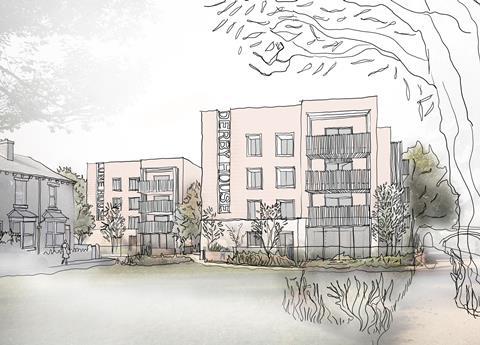Architects need to become advocates for retrofitting old buildings, especially ageing social housing, writes Chloë Phelps

With COP27 underway and an anticipated £35bn in cuts due to be announced this week by Jeremy Hunt, the case for retrofitting the homes of the most vulnerable comes in to sharp focus.
There are nearly five million homes in the social housing sector in the UK and 53% have a low EPC rating placing tenants in fuel poverty, exacerbated by the current fuel cost crisis.
Retrofit of our social housing stock needs to be at the centre of our national agenda, and given the same weighting as new build housing in terms of targets and standards.
We need to be considering the housing crisis more holistically. We talk about retrofit and new build as two separate disciplines, with different targets and funding streams. The two should be intrinsically linked, particularly with social housing.

Why are we trying to build so many new homes, when we don’t yet have a system that funds the repair and upgrade of our existing ones properly? In many cases residents don’t want to leave their homes and communities, they just want some investment in the places they already live.
At the moment the only government targets for retrofit are to hit EPC-C by 2030 and net zero by 2050. Meanwhile we have a moon shot style target of 300,000 new homes, something that hasn’t been achieved since the 1960s. That’s nearly 2.1million homes over seven years. In the same period we may have upgraded those we already have to a pretty basic standard to meet EPC-C.
As Carl Elefante has been quoted many times, ‘the most sustainable building is the one that is already built’. We need to learn to look after what we already have, particularly if we are going to make even more.
As architects we need to get much better at seeing the potential in the existing social housing stock
The benefits of retrofitting these homes goes beyond fuel efficiency. If we go with the ‘traditional’ approach, we’d be demolishing the worst performing homes and starting again. This would obviously be a step backwards in terms of net housing gains and embodied carbon, but retrofit offers so many other benefits too.
The projects can be much quicker, they don’t always need planning, there’s little or no ground works and it keeps communities together. There are opportunities for training and if we specify products carefully, local economies will also benefit. Creating places that people are proud to come home to should not be underplayed either.
Retrofit or refurbishment of pre-loved buildings for schools, offices and private dwellings is a well trodden route and the industry has demonstrated it is able to create beautiful projects out of repurposed crumbing buildings. As architects we need to get much better at seeing the potential in the existing social housing stock. This requires investing in training and being open and transparent about the lessons we learn whilst we do this work.

We need to become advocates for how these places can be transformed through simple but cost effective moves that convince housing officers and tenants alike. At our project at Mainway in Lancaster, we’re prioritising resident-centric moves like creating private gardens to ground floor flats and bigger windows to get lots of daylight into fairly constrained floor to ceiling heights. This goes hand in hand with improving the buildings’ thermal performance to reduce energy consumption and get bills down to a minimum.
One key challenge is the cost. It can be almost as expensive if not more, to retrofit to a good standard than it is to build from new. But we’ll only get better at it by doing more and more, and upskilling the wider construction industry (and one day maybe we’ll get rid of the VAT issue too). This is why, if there is any money in the budget, retrofit it is a good place to channel it.
It will go into some of the hardest hit communities, and have a more immediate impact on their finances than building new. It will also provide training opportunities and investment in local economies. There are already pioneers out there having a go, but we need more, and we need to talk about it.
Postscript
Chloë Phelps is CEO of Grounded, an architecture and urbanism practice that was established in 2021 with Place Capital Group, to build on the legacy of the work Chloë led in Croydon on the Small Sites Programme. She has experience as an architect, developer and planner in both the public and private sectors.
















No comments yet